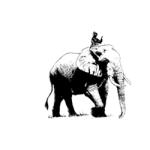 “Calmness”, an emotional state that was analyzed from over 9 million Tweets, predicted the direction of the Dow Jones Industrial Average, with an 87.6% accuracy rate – four days ahead of time.
“Calmness”, an emotional state that was analyzed from over 9 million Tweets, predicted the direction of the Dow Jones Industrial Average, with an 87.6% accuracy rate – four days ahead of time.
Hard to believe? Listen to this NPR: All Things Considered report by Guy Raz interviewing Johan Bollen about his just released study, Twitter Mood Predicts the Stock Market.
With Huina Mao and Xiao-Jun Zeng, Dr. Bollen investigated, “whether public sentiment, as expressed in large-scale collections of daily Twitter posts, can be used to predict the stock market.” They investigated emotional states, rather than the usual logical indicators – basic market fundamentals, past history, market trends, the charts. Using two assessment tools, OpinionFinder and Google Profile of Mood States, they found that the mood state with the highest predictive accuracy value is not happiness but calmness. So when the group of 2.7 million Twitter users is calm, the market goes up – four days later. When they are not calm, the market goes down – four days later.
What does this mean? Hasn’t happiness always been associated with productivity and success? Aren’t happy workers good workers? Real California Milk even has an advertising campaign contending that happy cows make great cheese.
But maybe we have overlooked the value of calmness in our personal and professional lives, especially in our current economic and political environment. Many people may be happy to have a job, but they may not be calm about their environment. Calmness may be the better indicator of the decisions people consider risky in this economy – such as short-term investments, critical hires, pay raises – than happiness. It may have an effect in less risky situations, such as work output, too.
Bollen, Mao, & Zeng’s work makes intuitive sense – when people are calm, they analyze financial risks differently than when they are not calm. Their work may have organizational implications, too – a sense of calmness in the work environment can have a very positive effect on decision making and work output.
As you analyze the environment of your organization, think beyond whether people are happy and consider their level of calmness.